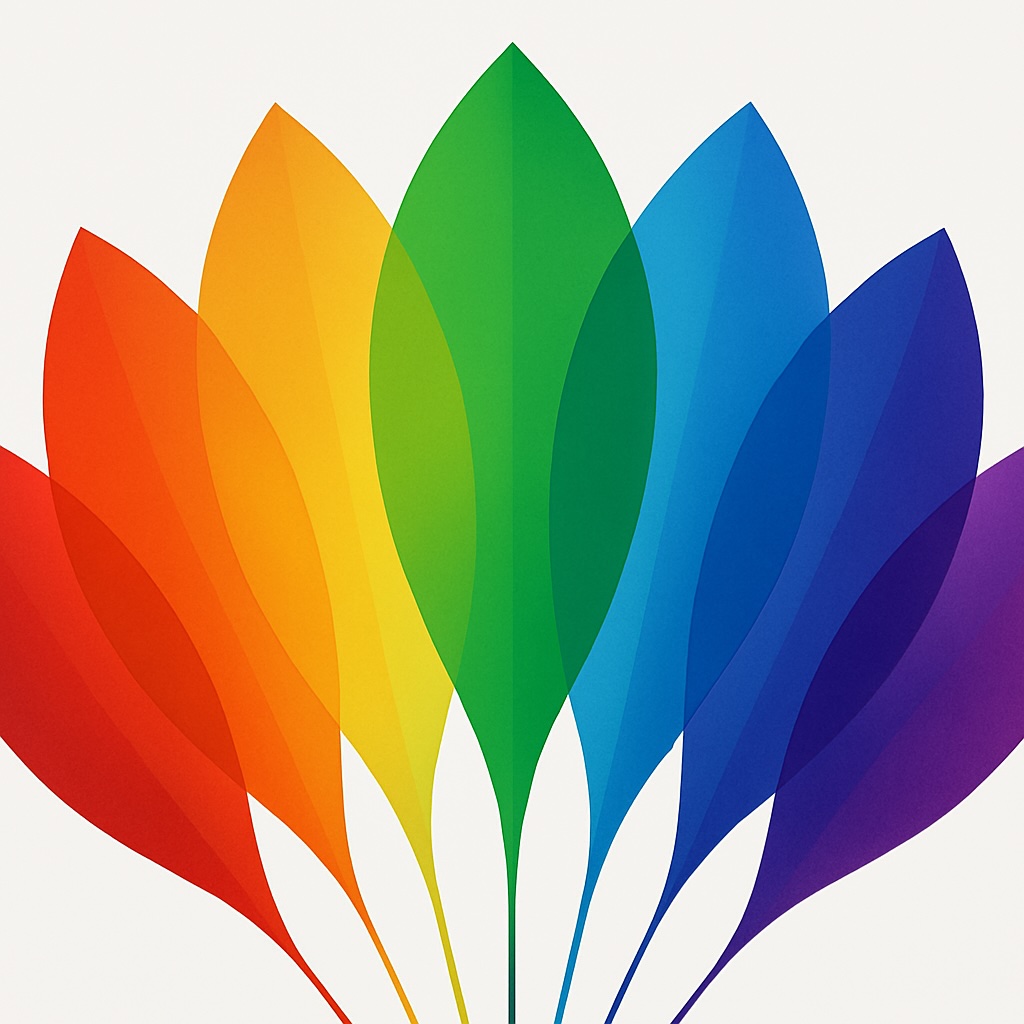Farbtherapie – Geschichte & Wirkweise
Geschichte der Farbtherapie
Die Farbtherapie, auch Chromotherapie genannt, ist eine der ältesten Heilmethoden der Menschheit. Schon in antiken Kulturen war man sich der Wirkung von Farben auf Körper und Psyche bewusst:
Altes Ägypten und Griechenland
• Die Ägypter nutzten farbige Edelsteine, Kleidung und Tempelräume zur Heilung.
• In den Heiltempeln Griechenlands wurden farbiges Licht und Sonnenbäder eingesetzt, um die Lebenskräfte zu aktivieren.
Indien und Ayurveda
• Die Lehre der Chakren – sieben Energiezentren im Körper – ist eng mit bestimmten Farben verbunden.
• Farben wurden zur Harmonisierung des energetischen Gleichgewichts eingesetzt.
Traditionelle Chinesische Medizin (TCM)
• Auch in der TCM spielen Farben in Verbindung mit den fünf Elementen und Organen eine wichtige Rolle (z. B. Grün = Leber, Rot = Herz).
Moderne Farbtherapie
Im 19. und 20. Jahrhundert begannen westliche Ärzte und Naturforscher, die Farbwirkung systematisch zu untersuchen. Einer der bekanntesten war Edwin D. Babbitt, der bereits 1878 in seinem Werk „The Principles of Light and Color“die Heilwirkung von Farben beschrieb.
Heute wird Farbtherapie sowohl in der Komplementärmedizin als auch in der Wellness- und Achtsamkeitspraxis eingesetzt.
Wirkweise der Farben
Farben sind sichtbares Licht unterschiedlicher Wellenlängen. Jede Farbe trägt eine spezifische Energie und Schwingung, die auf Körper, Psyche und feinstoffliche Ebenen wirken kann.
Wirkung auf den Körper
• Farben können das Nervensystem stimulieren oder beruhigen
• Sie beeinflussen hormonelle Prozesse, Blutdruck, Immunsystem
• Beispiel: Rot regt den Kreislauf an, Blau wirkt kühlend und entzündungshemmend
Wirkung auf die Psyche
• Farben lösen Emotionen aus, fördern Stimmung, Motivation und Kreativität
• Beispiel: Gelb kann die Konzentration fördern, Grün wirkt harmonisierend und entspannend
Wirkung auf die energetische Ebene
• In der Chakraarbeit werden Farben bestimmten Energiezentren zugeordnet (z. B. Wurzelchakra = Rot, Herzchakra = Grün)
• Farbtherapie kann Blockaden lösen, energetisches Gleichgewicht wiederherstellen
Anwendungen der Farbtherapie
• Farbiges Licht (z. B. mit LEDs oder Farbfiltern)
• Visualisierung von Farben in Meditation und Achtsamkeit
• Farbige Kleidung, Räume oder Lichtdesign
• Farbige Lebensmittel (nach dem Prinzip „Iss den Regenbogen“)
• Kombination mit anderen Heilmethoden (z. B. Bachblüten, Aromatherapie, Musiktherapie)
Farbtherapie ist eine sanfte, nicht-invasive Methode, die Körper und Seele gleichermaßen anspricht. Sie beruht auf uraltem Wissen und wird durch moderne Erkenntnisse über Licht, Frequenzen und Psychologie ergänzt.
Ob zur Entspannung, energetischen Balance oder Unterstützung bei seelischen Themen – Farben sind ein kraftvoller Schlüssel zu mehr Wohlbefinden und Lebenskraft.

Color therapy – history & mode of action
History of color therapy
Color therapy, also known as chromotherapy, is one of the oldest healing methods known to mankind. Even in ancient cultures, people were aware of the effect of colors on the body and psyche:
Ancient Egypt and Greece
– The Egyptians used colored gemstones, clothing and temple rooms for healing.
– In the healing temples of Greece, colored light and sunbathing were used to activate the life forces.
India and Ayurveda
– The teaching of the chakras – seven energy centers in the body – is closely linked to certain colors.
– Colors were used to harmonize the energetic balance.
Traditional Chinese Medicine (TCM)
– Colors also play an important role in TCM in connection with the five elements and organs (e.g. green = liver, red = heart).
Modern color therapy
In the 19th and 20th centuries, Western doctors and natural scientists began to systematically study the effects of color. One of the best known was Edwin D. Babbitt, who described the healing effects of colors as early as 1878 in his work “The Principles of Light and Color”.
Today, color therapy is used in complementary medicine as well as in wellness and mindfulness practices.
How colors work
Colors are visible light of different wavelengths. Each color carries a specific energy and vibration that can affect the body, psyche and subtle levels.
Effect on the body
– Colors can stimulate or calm the nervous system
– They influence hormonal processes, blood pressure, immune system
– Example: red stimulates the circulation, blue has a cooling and anti-inflammatory effect
Effect on the psyche
– Colors trigger emotions, promote mood, motivation and creativity
– Example: Yellow can promote concentration, green has a harmonizing and relaxing effect
Effect on the energetic level
– In chakra work, colors are assigned to specific energy centers (e.g. root chakra = red, heart chakra = green)
– Color therapy can release blockages and restore energy balance
Applications of color therapy
– Colored light (e.g. with LEDs or color filters)
– Visualization of colors in meditation and mindfulness
– Colored clothing, rooms or lighting design
– Colored food (according to the “eat the rainbow” principle)
– Combination with other healing methods (e.g. Bach flowers, aromatherapy, music therapy)
Color therapy is a gentle, non-invasive method that appeals to both body and soul. It is based on ancient knowledge and is complemented by modern insights into light, frequencies and psychology.
Whether for relaxation, energetic balance or support with emotional issues – colors are a powerful key to greater well-being and vitality.
